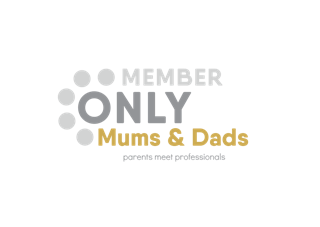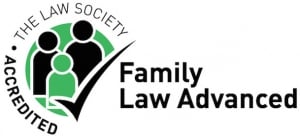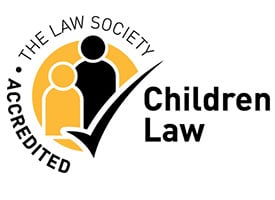Susan Ellingham interviews Julie Lee, Children and Young Persons Support Worker at SAFE
What brought you to SAFE?
Hi, I’m Julie Lee. I previously worked in schools for about 15 years in administration while my children were in school. Once they were older I wanted to do something for me, so I decided to train as a counsellor. I qualified in Autumn 2014 and went into private practice while continuing to work part-time in education.
A 12 months fixed term position at SAFE covering maternity leave for a Children and Young Persons Support Worker was advertised so I applied as it fit my skills as a counsellor. I was successful. The post then increased to an 18 months contract and during that time I started to facilitate the Pattern Changing Course offered by SAFE to victims of domestic abuse. I also undertook Helping Hands training through Women’s Aid. Helping Hands is used within the Children & Families Service one to one work and can also be bought in by schools and run as a workshop.
I was very fortunate that when my 18 months fixed term contract expired I was able to apply for 14.5 hours per week Children and Families Support Worker role and 4 hours per week support worker for the Pattern Change Course and 4 hours per week DART support Worker (which involves running the programme and assessing suitability to be on the programme).
Within my one to one work I often explore with children ‘outside’ and’ inside’ hurts. We use sticking plasters on an outline of their body to illustrate these. We talk to them about the inside hurt and link it to the Helping Hand Safety Plan. We read the book ‘The hurt’ which basically explains that, if you keep things inside it grows bigger and bigger.
I work across three programmes at SAFE.
I receive supervision and support from SAFE regularly.
What is the Helping Hands programme?
It’s a programme working with children around safety and emotions. The children draw around one of their hands and we ask them to identify five people they can speak to. We explore when it is fun to be scared and when it’s not fun and linking when it’s not fun to their helping hand (people they trust that they can speak to) and feeling safe. Children don’t often know what it’s like to feel safe when they’ve witnessed or experienced domestic abuse. We also offer the programme as workshops for schools for 5 to 11-year olds.
Within the programme we have had to show children what it is like feeling safe and provide them with actual opportunities like putting up a tent with lots of blankets, chocolate and fairy lights to demonstrate how it feels. Within the tent they can drink hot chocolate, read stories and feel safe and comfortable.
How many programmes have you delivered?
I’ve delivered the programme twice, and both programmes have been commissioned by a school. As a team we use elements of the Helping Hands programme as part of our one to one sessions to teach safety, for example, the ‘Uh Oh’ signs, using a gingerbread man so that they can use parts of the body to explain what happens inside their body when they experience emotions.
There’s a lot of cross over with work we do for Children and Families, Changing Pattern Course, Women’s Aids Helping Hands and DART.
What is DART?
DART stands for “Domestic Abuse Recovering Together”. It is a 10-week programme that allows mum (or carer) and one child to work together. Mum can do the course again if she has more than one child so that each child has access to the programme. The programme is for 7 to 14-year olds.
At the beginning of this year the NSPCC chose SAFE to receive training to enable us to deliver the DART programme. We invited local Early Help and Children Centres to attend the training with us so that they were familiar with the programme and could help administer the programme in conjunction with us.
We are half way through our second programme. We delivered our first one in September 2017 and in January 2018 we hope to run two groups a week.
The course has to be adapted to meet the ages and needs of the group. It is developing as we link with other providers and share what works and what doesn’t. The NSPCC has been very supportive.
The aim of the DART programme is to rebuild the bonds between mum and child that may have been damaged by the child being exposed to domestic abuse. The ethos behind the programme is to get mum and the child speaking about their feelings and their experiences.
At the outset of the programme, mums often say about their children: “they were always in bed” and “they didn’t really know what was happening” so one activity is that the child makes a house using a box and figures to illustrate their house when the domestic violence was taking place. They show this to their mother. The mum then hears what the child saw or experienced.
The format of each week is a 2-hour session. The session is broken into parts:
The beginning of the session is group work (we adapt the group work with the child working with the mother. We initially tried it as a group, but the children would interact with the other children and the parents with each other but not parent and child!)
The second part is where the children and parents are separated into different groups. The children will be with two facilitators and the mums will be in a women’s group with 2 facilitators.
The third part is when they all get together afterwards and share what has been appropriate.
How do you discuss domestic abuse with the children?
Under the DART programme we are quite explicit in spelling out what domestic violence is. The definition of domestic violence is explored right at the start. Initially, we felt uncomfortable about doing this but, like bereavement, it helps the child to understand what it actually is. It’s such a hidden and taboo subject, so to speak to children plainly about it is a good thing. The impact is often greater on the parents than the child. The children are happier with this matter of fact approach.
What is the definition?
“Domestic abuse (also called domestic violence) happens when one person hurts or bullies another person who is or was their partner or who is in the same family. It can happen between people who are going out together, living together, have children together or are married to each other. It can happen either when people live together or separately.
Domestic abuse can also happen after a relationship has finished. Usually (but not always), it is the man who is the abuser ad the woman who gets hurt. Although domestic abuse happens mostly between adults, young people can be affected by the abuse that they see and hear, and they can be hurt or bullied as part of domestic abuse between adults. Young people may also experience abuse from their own boyfriend/girlfriend.”
What types of activities do you do in DART?
We have a ‘hopes and fears’ wall. The wall is done in the split groups and then discussed when everyone gets back together. Often the mums do not want to talk about it with the child.
We also encourage the children to make a ‘talk to mum box’ which they can take home with them so that they can designate a time with their mum to take out the box and speak about the issues in the box.
Another activity is ‘ok and not ok’, where the mum and child work out what is ok and what is not ok.
When bonds have been broken between mum and child when, for example, mum has been meeting dad’s needs over and above the children’s just to keep everyone safe, they often need help in restoring their bond. To foster this, we do an activity with laminated faces. The child blindfolds their mum and the child gives directions to get the mum to stick a smile on the face. The child must touch and interact with their mother (which some children find challenging). The exercise helps to rebuild touching and trust.
Other specific children activities are:
- We work on feelings and what to do with these feelings – like anger, how to manage it. We use bottles with bicarbonate and vinegar. The children have to name the feeling while they scoop in the bicarbonate and then put the vinegar in to make it boil over.
- The children also make bugs – they have to say what bugs them and then discuss how to get over it.
Specific activities for the women’s group include:
- Consider and discuss why children might be angry with them and then discuss how to manage them. Working with children’s centre workers (who also offer Solihull Parenting Course) can be beneficial when we explore how to manage behaviours and explain why the children are displaying these behaviours.
- The parent writes an acrostic poem about the child, using the child’s name and then they have to write positive things about their child in either sentences against each letter or just words. They then share their poem with the child at the end and can give the poem at the end. It helps show the mother and child the strengths in their relationship and themselves.
We do a beginning and end game at each session. The end game on one of our sessions involved how to do hand massages and massages up the arm. This helped one mum to start to be able to interact with her child who had been refusing to allow her to put eczema cream on the child. Again, the exercise helped to rebuild touching and trust.
Are there any themes to the sessions?
Each session has a topic for example:
- Power and control wheel: at the beginning of the group we discuss the power and control in a relationship.
- Equality wheel: at the end of the programme we look at and discuss healthy relationships.
- Grief: we look at grief and what can be lost and what can be gained in an abusive relationship. Such as, they’ve lost dad but gained by no more shouting.
- Letting Go: we talk about what they want to keep and what they want to let go. It’s an exercise they do together. Under the programme we use helium balloons for the letting go exercise. Due to the cost of the balloons we can only supply one balloon per family. Ideally each person would have two balloons for this exercise. Each one writes what they want to let go’ and this is tied to the balloon to be let go. Then each one writes what they want to keep, and these are put in envelopes for them to keep.
- Safety planning and safe network: we use the helping hands work with this topic. We discuss recognition of risk and the importance of keeping ourselves safe.
- Family shield: which is a joint activity where they state what is good about their family and where they are now.
- Positive communication: the child and the mum play the mirror game – the child is given an emotion they have to express and the mother has to copy it and then guess what the emotion is and vice versa.
- Talking blankets: we give the child and mum a blanket to cuddle under, talk or watch a film together. The idea is to get them to realise that everyone has ideas, and everyone needs to be heard.
- Footsteps: they write what they have learnt on footsteps and they are given a ceramic mug and ceramic marker pens to write positive comments about each other on the mugs.
We offer support if issues arise within the programme. Often, we are working with the family on other issues as well as the DART programme.
How is the DART programme funded?
The DART programme is funded by Children in Need small grants, for a period of 3 years.
We are currently in talks with the NSPCC to see if they can teach us to be trainers of the DART programme so that we can teach new staff and others how to facilitate the programme. Currently we have a limited amount of staff who have the training and capacity to facilitate the DART programme. Once we have other trained staff we can then expand the geographic area and number of programmes we run. At the moment we cover Exeter and East Devon, but we need to spread out to South Hams and Teignbridge under terms of the grant. The Family Centres in those areas have not had any training so are not in a position to run the programme with us. They need to be trained too. Some of the suggested NSPCC resources recommended in the programme are too costly to be able to supply in our programme so the programme has had to be adapted to meet the funds and resources available.
The NSPCC wants to tweak their training package before they allow us to undertake the training. It is hoped that they will be able to offer this training package in the Spring of next year.
How big are the groups?
6 families (12 in the group).
Have the groups been well attended?
The DART programme is always full. We make sure that there are participants. We undertake assessment of mum and child. This takes between 1 to 1.5 hours to assess mum and child together with travel costs. If we assess them as not ready to be on the programme we have to find others to participate. We have to be flexible and be able to visit the mum and child as they are not always able to attend our offices. If someone is in need of financial support in order to attend, their family support worker can try to source funding for childcare and travel. We work with local schools to enable the child to be released and attend. The programme is run from 12.30 to 2.30 to prevent the child being too tired and to prevent other child care issues. They bring their own lunch.
What is the eligibility criteria?
Mum has to have been out of the abusive relationship for 6 months.
Julie Lee
Children and Young Persons Support Worker
Stop Abuse for Everyone (SAFE)
1 Queens Rd, Exeter EX2 9ER
Office: 01392 269547
Need some advice? Get in touch today
"*" indicates required fields
The information submitted here is used and stored for the purpose of replying to the enquiry. For more information on how we process data please visit our Privacy Policy.









